Status Operational | ||
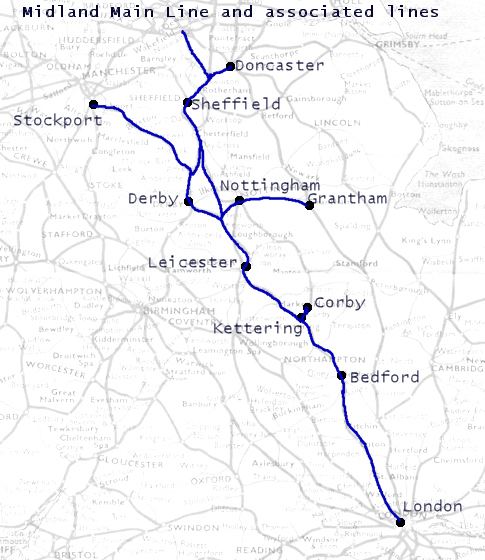 | ||
Locale Greater LondonEast of EnglandEast MidlandsYorkshire and the Humber Opened Stages between 1830s–1860s Terminis | ||
In detail midland main line london bedford train simulator 2015
The Midland Main Line is a major railway line in England from London to Sheffield in the North of England. The line is under the Network Rail description of Route 19; it comprises the lines from London's St. Pancras station via Leicester, Derby/Nottingham and Chesterfield in the East Midlands.
Contents
- In detail midland main line london bedford train simulator 2015
- Midland Counties early developments
- Midland Main Line Southern Extensions
- Northernmost Sections
- Under British Railways and Privatisation
- Network Rail route strategy for freight 2007
- Network Rail 2010 route plan
- Electrification
- Thameslink Programme
- Station improvements
- Route definition
- Accidents
- East Midlands Trains
- Thameslink
- CrossCountry and Northern
- Route description
- London to Nottingham and Sheffield Network Rail Route 19
- Ambergate Junction to Manchester
- Leeds to Carlisle
- Former stations
- References
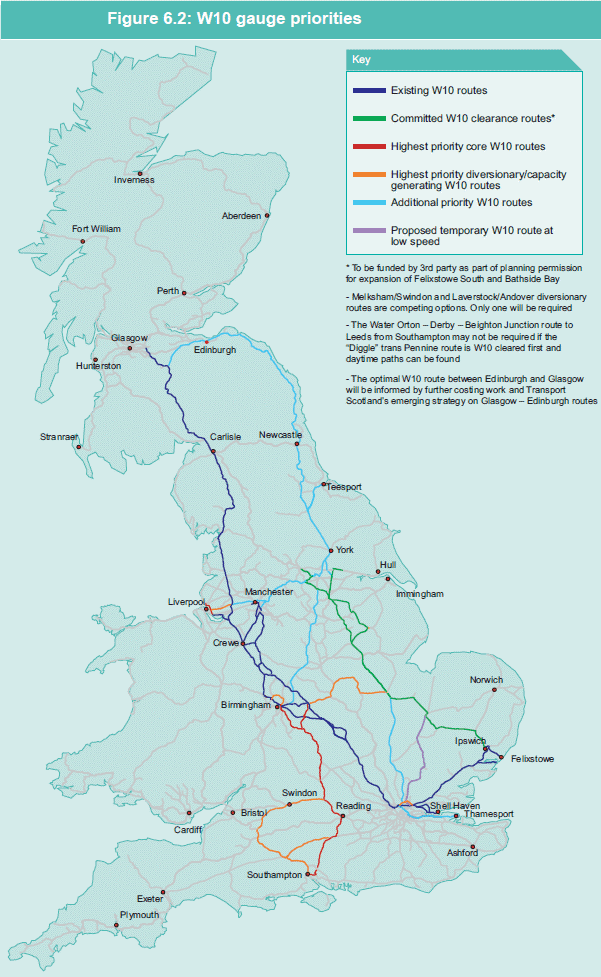
Express passenger services on the line are operated by East Midlands Trains. The section between St Pancras and Bedford is electrified and forms the northern half of Thameslink (mainly operated by Thameslink and Great Northern), with a fast service to Brighton and other suburban services.
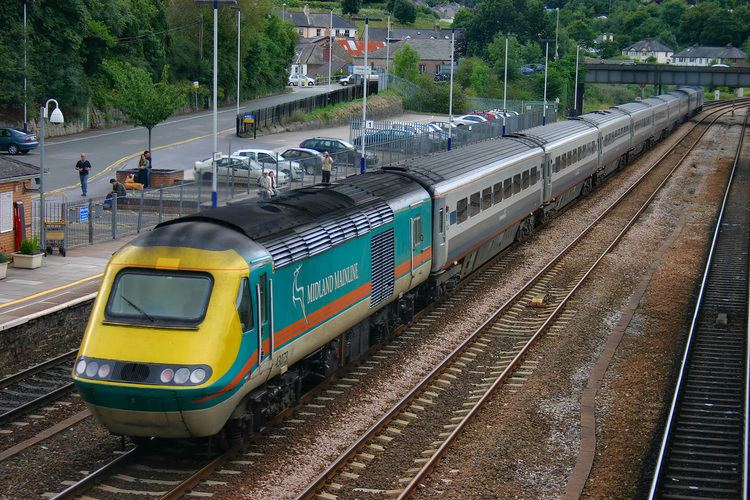
A northern part of the route, between Derby and Chesterfield, also forms part of the Cross Country Route operated by CrossCountry. Tracks from Nottingham to Leeds via Barnsley and Sheffield are shared with Northern. East Midlands Local also operates regional and local services using parts of the line.
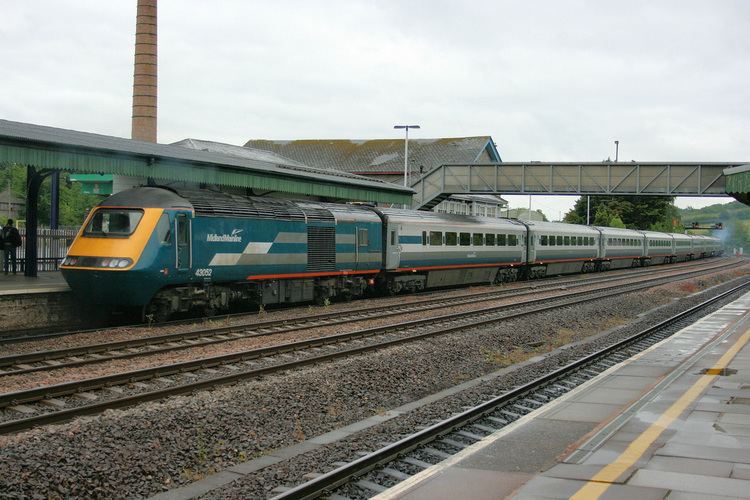
Midland Counties early developments
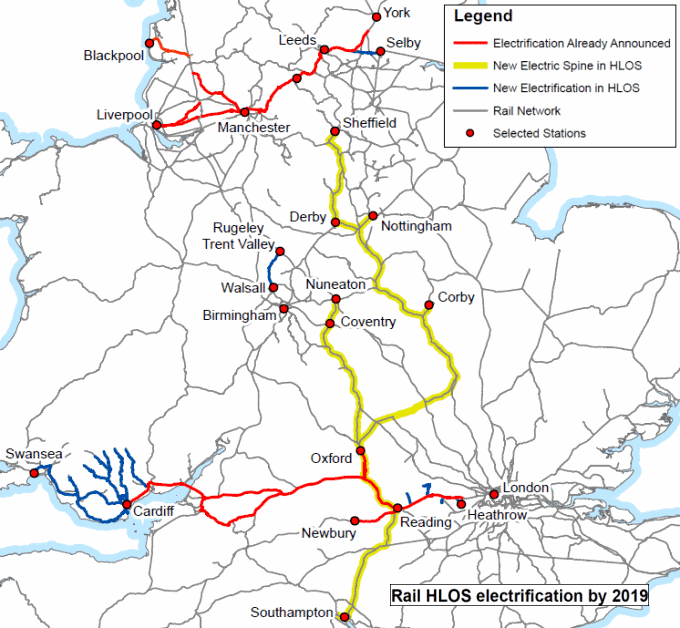
The Midland Main Line was built in stages between the 1830s and the 1870s. The earliest section was opened by the Midland Counties Railway between Nottingham and Derby on 4 June 1839. On 5 May 1840 the section of the route from Trent Junction to Leicester was opened.
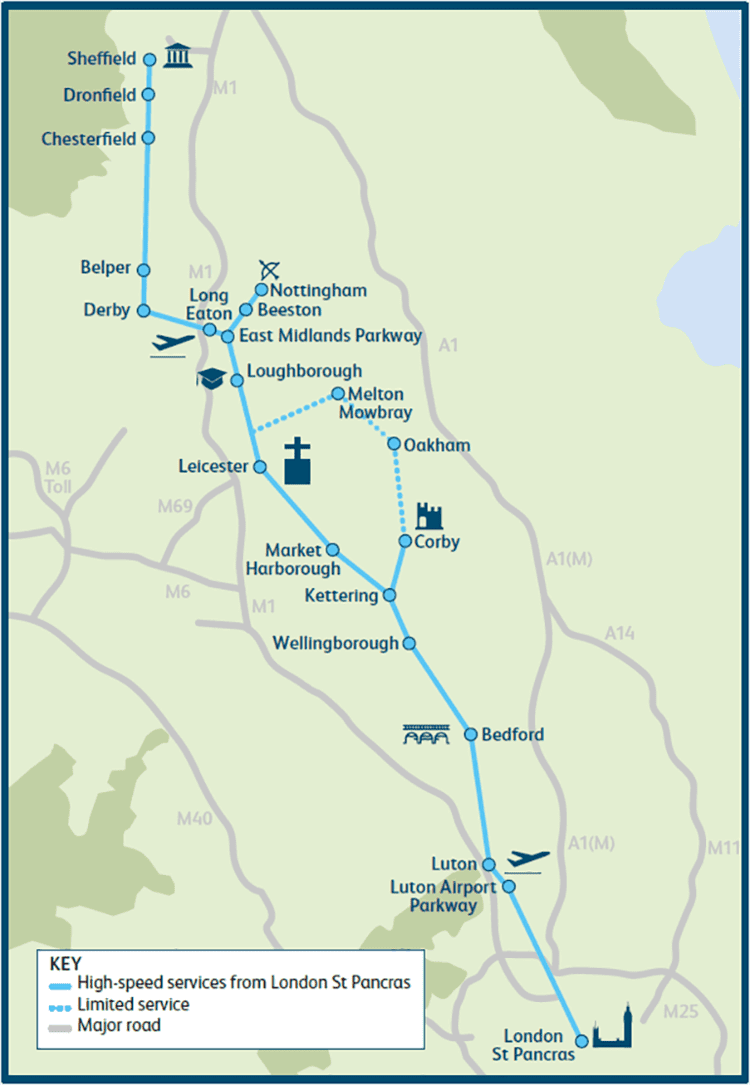
The line at Derby was joined on 1 July 1840 by the North Midland Railway to Leeds Hunslet Lane via Chesterfield, Rotherham Masborough, Swinton and Normanton.
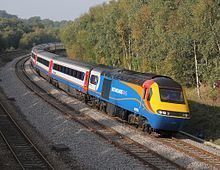
On 10 May 1844 the North Midland Railway, the Midland Counties Railway and the Birmingham and Derby Junction Railway merged to form the Midland Railway.
Midland Main Line Southern Extensions
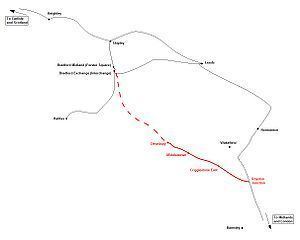
Without its own route to London, the Midland Railway relied upon a junction at Rugby with the London and Birmingham Railway line for access to the capital at London Euston. By the 1850s the junction at Rugby had become severely congested. The Midland Railway employed Thomas Brassey to construct a new route from Leicester to Hitchin via Kettering, Wellingborough and Bedford. giving access to London via the Great Northern Railway from Hitchin. The Crimean War resulted in a shortage of labour and finance, and only £900,000 (equivalent to £77,430,000 in 2015) was available for the construction, approximately £15,000 for each mile. To reduce construction costs the railway followed natural contours, resulting in many curves and gradients. Seven bridges and one tunnel were required, with 60ft cuttings at Desborough and Sharnbrook. There are also major summits at Kibworth, Desbrough and at Sharnbrook where a 1 in 119 gradient from the south over 3 miles takes the line to 340 feet (100 m) above sea level. This route opened for coal traffic on 15 April 1857, goods on 4 May and passengers on 8 May and the section between Leicester and Bedford is still part of the Midland Main Line.
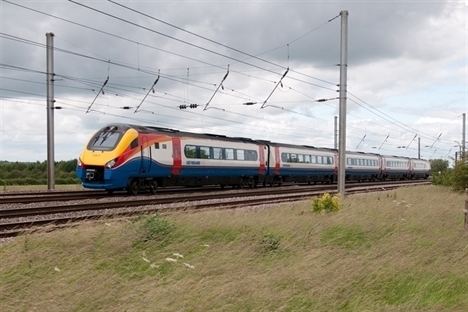
While this took some of the pressure off the route through Rugby, the GNR insisted that passengers for London alight at Hitchin, buying tickets in the short time available, to catch a GNR train to finish their journey. James Allport arranged a seven-year deal with the GN to run into Kings Cross for a guaranteed £20,000 a year (equivalent to £1,720,000 in 2015). Through services to London were introduced in February 1858.
This line met with similar capacity problems at Hitchin as the former route via Rugby, so a new line was constructed from Bedford via Luton to St Pancras which opened on 1 October 1868. The construction of the London extension cost £9,000,000 (equivalent to £730,290,000 in 2015).
As traffic built up, the Midland opened a new deviation just north of Market Harborough railway station on 26 June 1885 to remove the flat crossing of the Rugby and Stamford Railway.
Northernmost Sections
Plans by the Midland Railway to build a direct line from Derby to Manchester were thwarted in 1863 by the builders of the Buxton Line who sought to monopolise on the West Coast Main Line.
In 1870 the Midland Railway opened a new route from Chesterfield to Rotherham which went through Sheffield.
The mid-1870s saw the Midland line extended northwards through the Yorkshire Dales and Eden Valley on what is now called the Settle-Carlisle Railway.
Before the line closures of the Beeching era, the lines to Buxton and via Millers Dale during most years presented an alternate (and competing) main line from London to Manchester, carrying named expresses such as The Palatine. Express trains to Leeds and Scotland such as the Thames-Clyde Express mainly used the Midland's corollary Erewash Valley Line, returned to it then used the Settle and Carlisle Line. Expresses to Edinburgh Waverley, such as The Waverley travelled through Corby and Nottingham.
Under British Railways and Privatisation
Most Leicester-Nottingham local passenger trains were taken over by diesel units from 14 April 1958, taking about 51 minutes between the two cities.
When the Great Central Main Line closed in the 1960s, the Midland became the only direct main-line rail link between London and the East Midlands and parts of South Yorkshire.
The Beeching cuts and electrification of the West Coast Main Line brought an end to the marginally longer London-Manchester service via Sheffield.
In 1977 the Parliamentary Select Committee on Nationalised Industries recommended considering electrification of more of Britain's rail network, and by 1979 BR presented a range of options that included electrifying the Midland Main Line from London to Yorkshire by 2000. By 1983 the line had been electrified from Moorgate to Bedford, but proposals to continue electrification to Nottingham and Sheffield were not implemented.
The introduction of the High Speed Train (HST) in May 1983, following the Leicester area resignalling, brought about an increase of the ruling line speed on the fast lines from 90 miles per hour (140 km/h) to 110 miles per hour (180 km/h).
Between 2001 and 2003 the line between Derby and Sheffield was upgraded from 100 miles per hour (160 km/h) to 110 miles per hour (180 km/h) as part of Operation Princess, the Virgin-funded CrossCountry route upgrade.
In January 2009 a new station, East Midlands Parkway, was opened between Loughborough and Trent Junction, to act as a park-and-ride station for suburban travellers from East Midlands cities and to serve nearby East Midlands Airport.
Most recently 125 miles per hour (201 km/h) running has been introduced on extended stretches. Improved signalling, increased number of tracks and the revival of proposals to extend electrification from Bedford to Sheffield are underway. Much of this £70 million upgrade, including some line-speed increases, came online on 9 December 2013 (see below).
Network Rail route strategy for freight 2007
Network Rail published a Route Utilisation Strategy for freight in 2007; over the coming years a cross-country freight route will be developed enhancing the Birmingham to Peterborough Line, increasing capacity through Leicester, and remodelling Syston and Wigston junctions.
Network Rail 2010 route plan
Traffic levels on the Midland Main Line are rising faster than the national average, with continued increases predicted. In 2006 the Strategic Rail Authority produced a Route Utilisation Strategy for the Midland Main Line to propose ways of meeting this demand; Network Rail started a new study in February 2008 and this was published in February 2010. After electrification, the North Northamptonshire towns (Wellingborough, Kettering and Corby) are planned to have an additional 'Outer Suburban service' into London St. Pancras, similar to the London Midland's Crewe – London Euston services to cater for the growing commuter market. North Northamptonshire is a major growth area, with over 7,400 new homes planned to be built in Wellingborough and 5,500 new homes planned for Kettering. The service will be operated by new Class 387s.
Highlights include:
Electrification
On 16 July 2012, the Department for Transport announced plans to reconfigure the existing electrified section and to electrify most of the line by 2020 at an expected cost of £800 million. In January 2013 Network Rail expected the electrification to cost £500 million and be undertaken in stages during Control Period 5 (April 2014 – March 2019), with Bedford to Corby section electrified by 2017, Kettering to Derby and Nottingham by 2019 and Derby to Sheffield by 2020. Those plan did not include electrification of Nottingham to Clay Cross via Alfreton, nor Corby to Syston via Oakham.
The plans were put on hold in June 2015 by the Secretary of State for Transport (Patrick McLoughlin). In September 2015, the Department for Transport announced revised completion dates of 2019 for Corby and Kettering and 2023 for the line further north to Leicester, Nottingham and Sheffield.
In the Route Utilisation Strategy, Network Rail recommended the Class 801 in 10 car formations for the InterCity services, two 775 metres (848 yd) freight loops south of Bedford and between Kettering and Leicester for longer and heavier freight services, additional infrastructure to accommodate additional freight and passenger train paths and also recommended an additional stop at Kettering for the semi-fast London-Sheffield service.
The electrification is part of the wider Electric Spine project to create an electrified route from the Port of Southampton to Sheffield and possibly Doncaster. The project will mean electrifying the Varsity Line (Bedford – Oxford), the Cherwell Valley/Great Western Main Lines (Oxford/Aynho Junction – Reading) and the Reading to Basingstoke Line. The South Western Main Line between Basingstoke and Southampton will be converted to overhead AC electrification from third rail DC power.
Further possible electrification associated:
Thameslink Programme
The Thameslink Programme has seen the platforms at most stations south of Bedford lengthened to 12-car capabilities. St Pancras, Cricklewood, Hendon and Luton Airport Parkway were already long enough, whilst bridges at Kentish Town mean it cannot expand beyond the current 8-car platform length. West Hampstead Thameslink has had a new footbridge installed and a new station building constructed. In September 2014 the current Thameslink Great Northern franchise was awarded and trains on this route are currently operated by Thameslink. In 2018 the Thameslink network will additionally be expanded with some Southern services being merged into it.
Station improvements
In 2013/14 Nottingham station was refurbished and the platforms restructured.
As part of Wellingborough's Stanton Cross development, Wellingborough station is to be expanded.
Ilkeston between Nottingham and Langley Mill is under construction and scheduled to open in autumn 2016.
Two new stations are planned:
Some new stations have been proposed:
Route definition
The term Midland Main Line has been used from the late 1840s to describe any route of the Midland Railway on which express trains were operated.
It is first recorded in print in 1848 in Bradshaw’s railway almanack of that year. In 1849 it begins to be mentioned regularly in newspapers such as the Derby Mercury.
In 1867 the Birmingham Journal uses the term to describe the new railway running into St Pancras railway station.
In 1868 the term was used to describe the Midland Railway main route from North to South through Sheffield and also on routes to Manchester, Leeds and Carlisle.
Under British Rail the term was used to define the route between St Pancras and Sheffield, but in more recent times, Network Rail has restricted it in its description of Route 19 to the lines between St. Pancras and Chesterfield.
Accidents
East Midlands Trains
The principal operator is East Midlands Trains, which operates 5 InterCity trains every hour from London St Pancras with two trains per hour to Nottingham and Sheffield and one train per hour to Corby. EMT use Class 222 Meridian trains in various carriage formations for most of its InterCity services. Traditional 8 coach HSTs are used for its Nottingham fast service as well morning/evening Leeds services.
Thameslink
Thameslink provides frequent, 24-hour commuter services south of Bedford under the name of Govia Thameslink Railway (GTR) as part of its Thameslink route to London Bridge, Gatwick Airport, Brighton and Sutton, using 4-car electric Class 319, Class 377 Electrostar trains which can be coupled into 8- and 12-car formations. They will be replaced by a Class 700 Desiro City.
CrossCountry and Northern
CrossCountry runs half-hourly services between Derby and Sheffield on its route between the South West and North East, and hourly services from Nottingham to Birmingham and Cardiff. Northern runs an hourly service to Leeds from Nottingham via Alferton and Barnsley.
Other operators include TransPennine Express in the Sheffield area.
Route description
The cities, towns and villages currently served by the MML are listed below. Stations in bold have a high usage. This table includes the historical extensions to Manchester (where it linked to the West Coast Main Line) and Carlisle (via Leeds where it meets with the 'modern' East Coast Main Line).
Network Rail groups all lines in the East Midlands and the route north as far as Chesterfield and south to London as route 19. The actual line extends beyond this into routes 10 and 11.
London to Nottingham and Sheffield (Network Rail Route 19)
Ambergate Junction to Manchester
For marketing and franchising, this is no longer considered part of the Midland Main Line: see Manchester, Buxton, Matlock and Midlands Junction Railway
The line was once the Midland Railway's route from London St Pancras to Manchester, branching at Ambergate Junction along the Manchester, Buxton, Matlock and Midlands Junction Railway, now known as the Derwent Valley Line. In days gone by, it featured named expresses such as The Palatine. Much later in the twentieth century, it carried the Midland Pullman.
This line was closed in the 1960s between Matlock and Buxton, severing an important link between Manchester and the East Midlands, which has never been satisfactorily replaced by any mode of transport. A section of the route remains in the hands of the Peak Rail preservation group, operating between Matlock and Rowsley to the north.
Leeds to Carlisle
For marketing and franchising, this is no longer considered part of the Midland Main Line: see Settle-Carlisle Railway.
World War I prevented the Midland Railway from finishing its direct route through the West Riding to join the Settle and Carlisle (which would have cut six miles from the journey and avoided the need for reversal at Leeds).
The first part of the Midland's West Riding extension from the main line at Royston (Yorks.) to Dewsbury was opened before the war. However, the second part of the extension was not completed. This involved a viaduct at Dewsbury over the River Calder, a tunnel under Dewsbury Moor and a new approach railway into Bradford from the south at a lower level than the existing railway (a good part of which was to be in tunnel) leading into Bradford Midland (or Bradford Forster Square) station.
The 500 yards (460 m) gap between the stations at Bradford still exists. Closing it today would also need to take into account the different levels between the two Bradford stations, a task made easier in the days of electric rather than steam traction, allowing for steeper gradients than possible at the time of the Midland's proposed extension.
Two impressive viaducts remain on the completed part of the line between Royston Junction and Dewsbury as a testament to the Midland's ambition to complete a third direct Anglo-Scottish route. The line served two goods stations and provided a route for occasional express passenger trains before its eventual closure in 1968.
The failure to complete this section ended the Midland's hopes of being a serious competitor on routes to Scotland and finally put beyond all doubt that Leeds, not Bradford, would be the West Riding's principal city. Midland trains to Scotland therefore continued to call at Leeds before travelling along the Aire Valley to the Settle and Carlisle. From Carlisle they then travelled onwards via either the Glasgow and South Western or Waverley route. In days gone by the line enjoyed named expresses such as the Thames-Clyde Express and The Waverley.
Former stations
As with most railway lines in Britain, the route used to serve far more stations than it currently does (and consequently passes close to settlements that it no longer serves). Places that the current main line used to serve include
